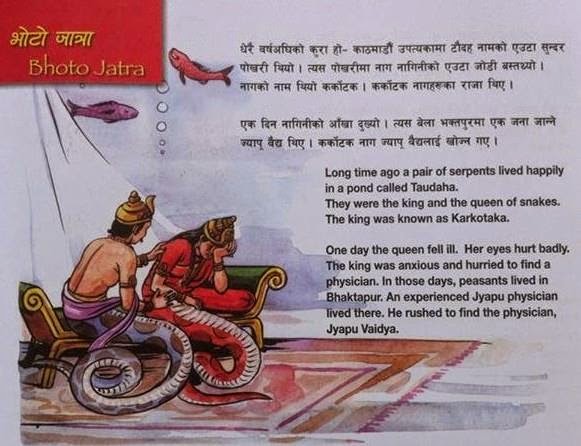happy dhau (curd/ yoghurt) baji (beaten rice)day.
हाम्रो मुलुकमा ठाउँअनुसार फरकफरक धान पर्व भए पनि रोपाइँलाई विशेष महत्त्व दिने गरेको पाइन्छ।
नेपालमा युगौंदेखि चलिआएका धार्मिक तथा सांस्कृतिक पर्वहरूमा विभिन्न अन्न प्रयोग गर्ने प्रचलनले विशेष स्थान ओगट्दै आएको छ। ती अन्नमध्ये विशेषत: धान तथा यसको परिकार अधिकांश धार्मिक कार्य, विभिन्न कर्मकाण्ड तथा चाडपर्वमा अत्यावश्यक वस्तुको रूपमा प्रयोग हुँदै आएका छन्। भगवान् तथा पितृप्रति श्रद्धाभावले चढाइने, शुभकार्य तथा साइतमा टीकाको रूपमा लगाइने, भिक्षा दिइने तन्त्रमन्त्र तथा झारफूक कार्यमा साथै अन्य विधामा समेत अति महत्त्व र पवित्र वस्तुको रूपमा प्रयोग गरिन्छ। यस अर्थमा अरू अन्नभन्दा धानको महिमा अपार छ भन्नुमा अतिशयोक्ति नहोला। यसर्थ यस लेखमा विभिन्न धार्मिक कार्य तथा पर्वहरूमा धान तथा यसको परिकार चढाउने कार्यलाई निरन्तरता दिइआएका परम्परागत संस्कार र जनजाति विशेषले चलाइआएको संस्कृति साथै रोचक किम्वदन्तीको संम्क्षित विवरण प्रस्तुत गरिएको छ।
धानबालीले राष्ट्रिय अर्थतन्त्रमा विशेष योगदान पुर्याउँदै आएको परिप्रेक्षमा २०६२ सालदेखि असार १५ गतेलाई 'राष्ट्रिय धानबाली दिवस' को रूपमा मनाउँदै आएको छ। काठमाडौं उपत्यका तथा पहाडी भेगमा असार १५ लाई 'रोपाइँ पर्व' को रूपमा मनाउने चलन छ। यस पर्वलाई 'मानो रोपेर मुरी फलाउने' अवसरको रूपमा समेत लिने गरिन्छ। ललितपुरमा गाईजात्राको भोलिपल्ट 'दथुसाया मतया' या 'रोपाइँ यात्रा' मनाउने चलन छ। नेवार समुदायमा धार्मिक परम्पराअनुसार सानै उमेरमा गरिने 'इही' (बेलविवाह) तथा 'बारह।' (सूर्यदर्शन/गुफा राख्ने) को शुभअवसरमा आमाले छोरीलाई आत्मीयतासाथ 'सरुवा चामल' (चामल र धानमिश्रित) चढाइने गरिन्छ, जसलाई नेपाल भाषामा 'बा:हँ छुइगु' भनिन्छ। साथै 'कैँता पूजा' (ब्रतवन्ध) मा छोराले 'आमा मलाई भिक्षा देऊ।' भनी दुई हात जोडी माग्दा आमाले ममतापूर्वक भावविह्वल भई छोरालाई चामल भिक्षा दिने चलन अति सान्दर्भिक देखिन्छ।
काठमाडौं उपत्यकाका मगर समुदायले धानको बेर्ना शिरमा लगाई 'भूमि पर्व' मनाउने चलन छ। यस कार्यलाई राम्रो उत्पादनका लागि प्रार्थनास्वरूप भूमिलाई पूजा गरिएको मानी आएको छ।
जुम्लामा धान दाइँ गरेर सफा गरिसकेपछि पहिलो सुप्पा (नाङ्लो) धान चन्दननाथलाई चढाउने र दोस्रो सुप्पा धान छोरीलाई पेवा बढाउन दिने चलन छ। साथै घटस्थापनाको दिन धानको नयाँ बाली काटेर यसलाई चिउरा बनाएर पहिलो देवतालाई चढाउने र त्यसपछि मात्र नयाँ बाली घरमा भित्र्याउने प्रचलन छ। खोटाङमा किराँती समुदायले घैया धान पोलेर 'कुल पूजा' गर्ने चलन छ। रामेछापमा नेपालको लोपोन्मुख अल्पसंख्यक सूचीमा पर्ने 'हायू जाति' मा कुनै पनि धाॢमक कार्य सुरु गर्नुभन्दा पहिले घैयाको चामल चढाउने चलन छ।
तराईमा मनाइने 'छठपर्व' मा पूजा गर्न 'गमडी धान' को चामल उत्तम मानिन्छ भने 'जितिया पर्व' मा पितृहरूलाई चढाउने गमडी धानकै चिउरा चाहिन्छ। साथै छठपर्वको अवसरमा छठीमाईलाई चढाउन चामलको पिठोबाट तयार गरिने 'ठेकुवा रोटी' अनिवार्य छ। तराईमा छठपर्वका प्रसाद बनाउन 'साठी धान' र विवाहको विधि पूरा गर्न 'लालका बसमती धान' नभई हुँदैन। पहाडी भेगमा विवाहोत्सवमा साइपावामा राखी पठाइने मिठाईमध्ये चामलको पिठोबाट तयार गरिने कसराको लड्डु अनिवार्य छ। धार्मिक परम्पराअनुसार विवाहको शुभअवसरमा दुलहीले जग्गेमा बालिएको आगोमा 'लावा' (धानको एक परिकार) छर्ने चलन छ। उक्त लावालाई उन्नतिको चिनो साथै दैविक (अग्नि) साक्षीका रूपमा लिने गरिन्छ। साथै अन्य पवित्र व्रतमा लावाको माला बनाएर भगवान्लाई चढाउने चलन छ। बैतडीमा धार्मिक परम्पराअनुसार प्राचीन 'शाली धान' को लावा तुलस विवाह र अन्य धार्मिक पूजासमेत प्रयोग गरिन्छ।
भक्तपुरको राजा आनन्द मल्लको पालामा १३०१ सालतिर लडाइँ भएको समयमा शत्रुपक्षका मानिसले गाडेको धान सडेर त्यसबाट 'हकुवा चामल' बनेको पाइएको र यसै समयदेखि हकुवा चामल खाने चलन थालिएको विश्वास गरिन्छ। काठमाडौं उत्पयकामा ज्यापू समुदायले धान रोप्ने समयमा खेतका लागि पानी मागी दिने काम भ्यागुताले गर्दै आएको छ भन्ने आस्थाअनुरूप 'गुन्हु पुन्छी' अथवा 'क्वाँटी पुन्ही' (जनै पूर्णिमा) को दिन भ्यागुतोलाई भात खान दिने चलन छ। साथै धानखेतमा हरियो रङको भ्यागुता देखा परे धान नपाकेको र खैरो रंगको भ्यागुता देखा परे धान पाक्न थाल्यो भन्ने विश्वास गरिन्छ।
मुगुको चैन गाउँमा राष्ट्रिय धान दिवसको अवसरमा गरिने रोपाइँ कार्यक्रममा धानखेतमा स्थानीय सांस्कृतिक 'पुल्ती नाच' प्रदर्शन गर्ने चलन छ। इलाममा रक्षाबन्धन (जनैपूर्णिमा) पछि कृष्ण जन्माष्टमीसम्म भदौरे जात्रा मनाउने चलन छ भने यसको प्रमुख जात्रा नै 'रोपाइँ जात्रा' लाई मानिन्छ। यस जात्रामा हातमा धानको बेर्ना लिएका रोपाहार र कोदालो बोकेका बाउसेहरू धान रोपेको नाटक गर्दै नाच्दै नौमती बाजाका साथमा सहर परिक्रमा गर्ने चलन रहिआएको छ।
नुवाकोटमा सबैतिर धान रोपाइँ सकिएपछि त्यहाँका वासिन्दाले स्थानीय व्यक्तिलाई डोली (ताम्दान) मा राखी छत्रले ओडाई चारजनाले बोकेर भैरव मन्दिरको नजिकको धान खेत घुमाउने चलन राजा जयप्रकाश मल्लको पालादेखि चलिआएको कथन छ।
नेवार समुदायको केही जातिमा शवयात्राको सिलसिलामा यात्रा गरिने बाटोलाई पवित्र पार्न धान तथा लावा छर्दै शव अगाडि बढाउने परम्परा यथावत् छ। परापूर्वकालमा स्वर्गका राजा इन्द्रले मान्छेको भेषमा काठमाडौं आई किसानलाई नसोधी बगैंचाबाट परिजात फूल चोरेको आरोपमा उनलाई बाँधेर राखे। आफ्नो छोरा फुत्काउने इन्द्रकी आमा दागिं (वसुन्धरा) काठमाडौं आई किसानसँग 'के चाहिन्छ माग' भनिन्। किसानले 'धान पकाउन कुहिरो' मागे र उनले पूरा गरिन् भन्ने रोचक किंवदन्ती छ।










